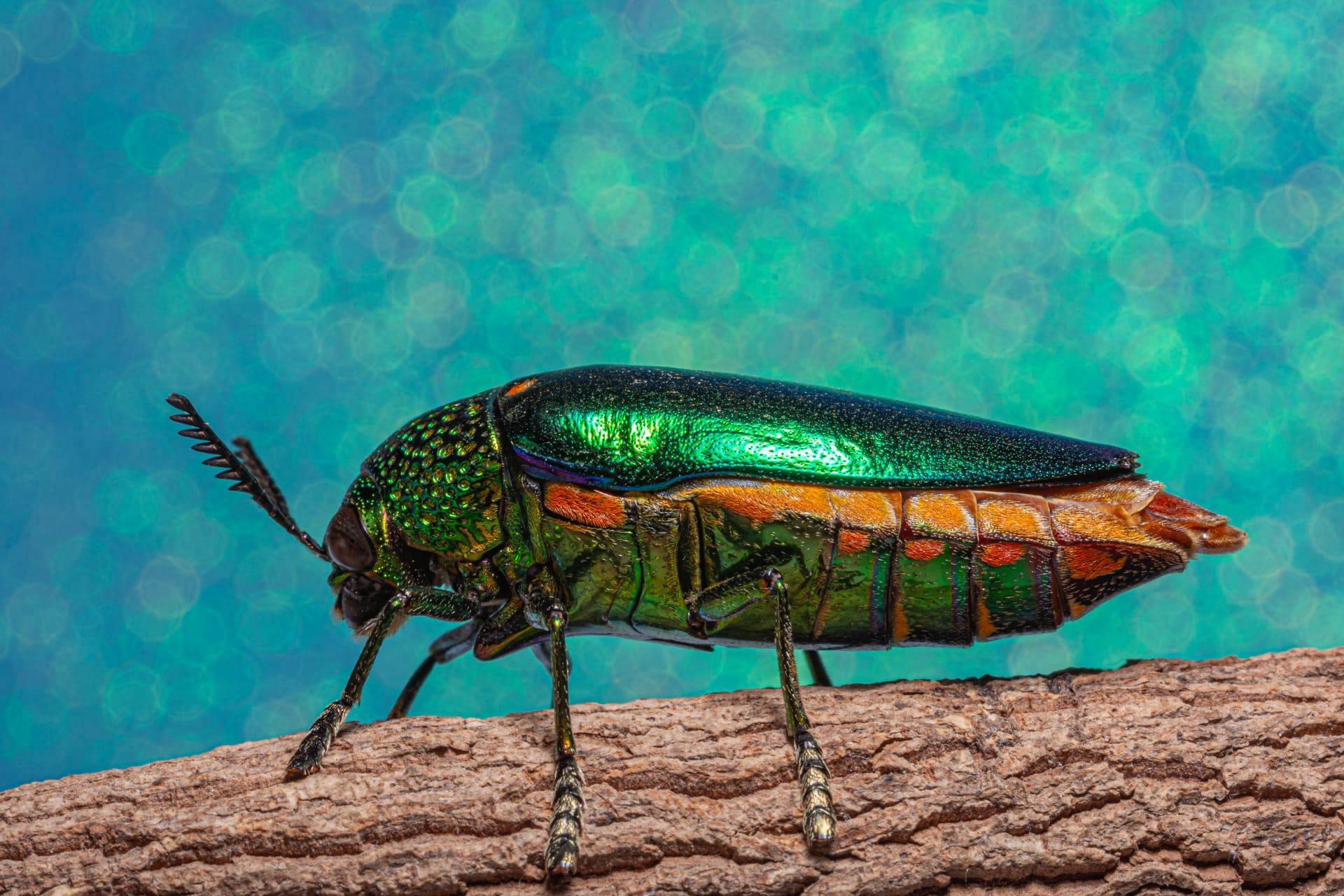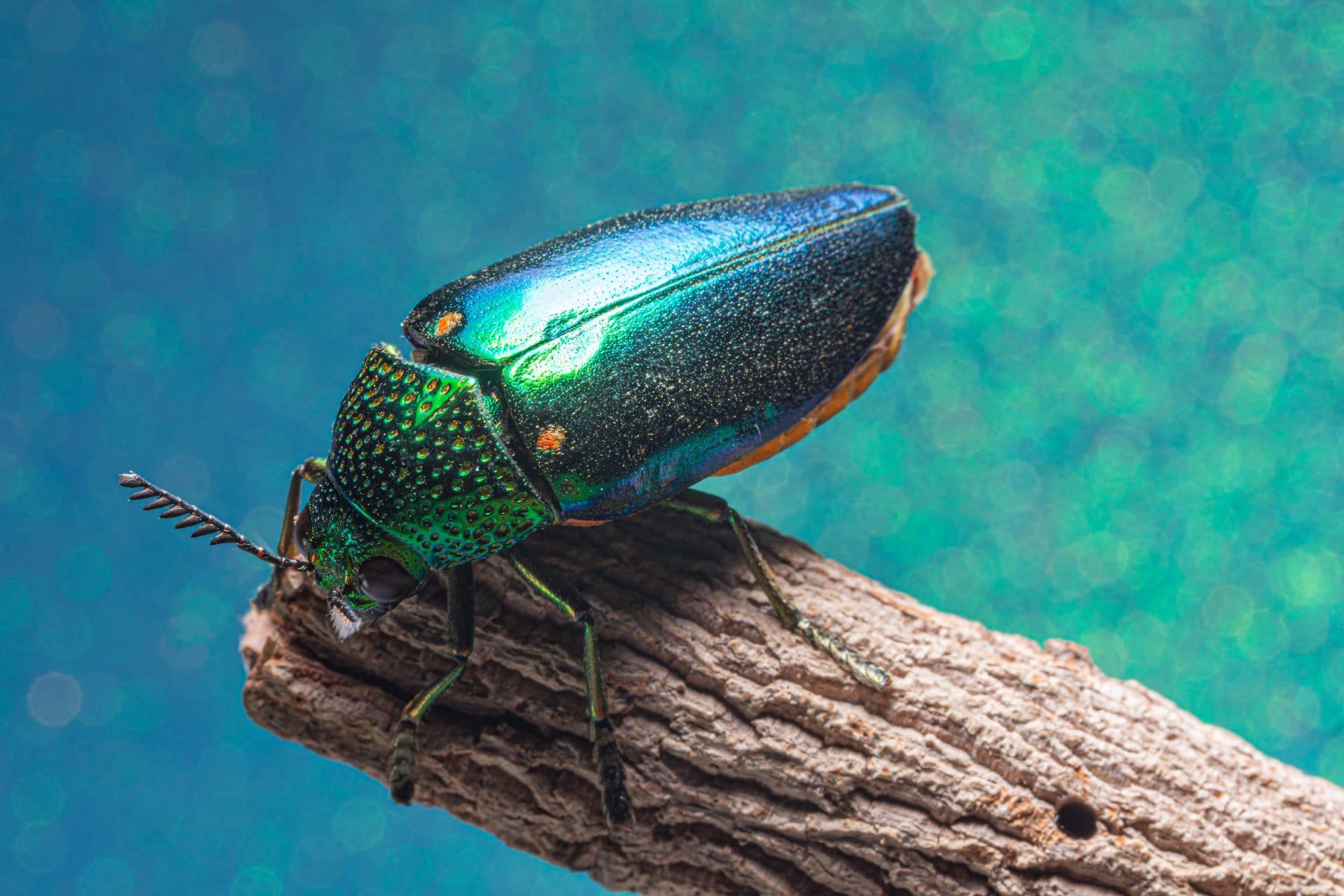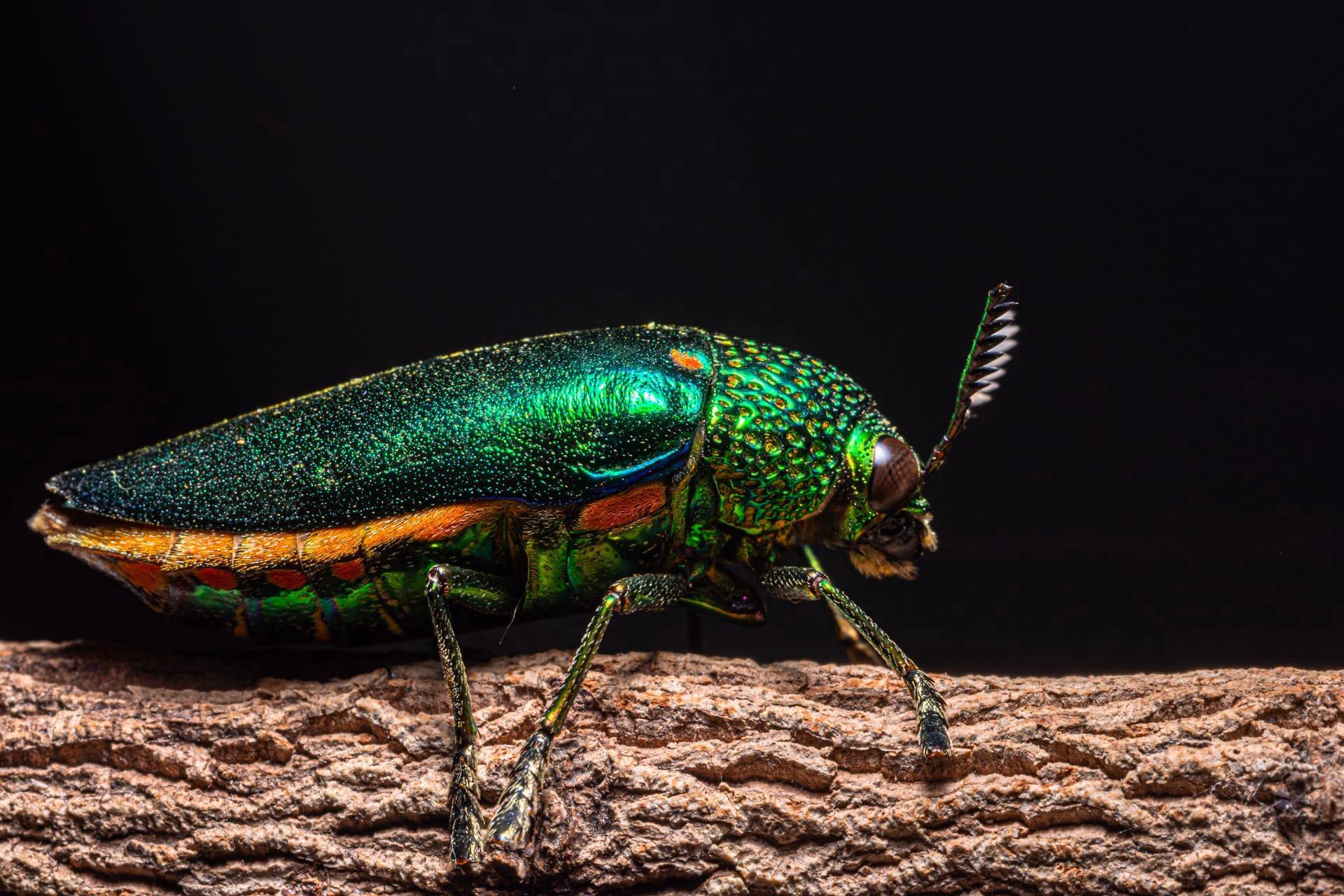1
Jewel beetles, known for their stunning iridescent colors, owe this beauty to their unique microstructure rather than pigments. Each beetle's elytra (hardened forewings) contain multiple layers of chitin, a fibrous substance. These layers are structured in a way that refracts light, creating a shimmering effect. The thickness and spacing of these layers vary, influencing the specific color seen. For example, a spacing of around 150 nanometers results in a vibrant green, a common hue in these beetles.
One of the most fascinating aspects of jewel beetles is their role in the art world. The beetle's shimmering wings have been used in traditional Asian art for centuries, particularly in Japan and China. These wings are carefully arranged and glued onto various objects, creating intricate patterns and designs. The use of beetle wings in art highlights not only the human appreciation for natural beauty but also the sustainable use of organic materials in artistic expression.

2
Jewel beetles are not just visually appealing; they have an extraordinary ability to detect fire. These beetles can sense forest fires from up to 80 kilometers away, thanks to infrared sensors located in their abdomens. These sensors are incredibly sensitive, allowing beetles to hone in on a fire's heat signature. This adaptation is crucial for their lifecycle, as they lay eggs in the charred wood of recently burnt trees, where their larvae find a rich, uncompetitive food source in the decaying wood.
In addition to their fire detection capabilities, jewel beetles are remarkable for their survival tactics during periods of food scarcity. Some species can enter a state of diapause, a form of dormancy, which can last for several years. During diapause, their metabolic rate significantly decreases, allowing them to survive without food for extended periods. This adaptation is a testament to their resilience and ability to thrive in various environmental conditions.

3
The mating behavior of jewel beetles is particularly unique due to the male beetle's reliance on visual cues. Males are attracted to objects that reflect polarized light, a characteristic typical of the female beetle's wings. However, this attraction can sometimes lead to a peculiar phenomenon known as "pseudocopulation," where male beetles attempt to mate with bottle caps, polished stones, or any other objects that mimic the female's wing reflection. This behavior underscores the importance of visual signals in the jewel beetle's reproductive process.
Another interesting fact about jewel beetles is their role in scientific research. The beetle's iridescent coloration has inspired scientists to develop new materials and technologies. For instance, researchers have studied the beetle's wing structure to create anti-counterfeit technology for currencies and identification documents. The intricate nanostructures found in the beetle's wings are difficult to replicate, making them an excellent model for secure and unique design patterns.

4
Jewel beetles have a significant impact on their ecosystems, particularly in forest environments. They play a vital role in the decomposition process by feeding on decaying wood, which helps in nutrient recycling. This feeding habit not only aids in forest regeneration by breaking down dead trees but also provides a habitat for other species, including various fungi and microorganisms. Thus, these beetles contribute to the biodiversity and health of forest ecosystems.
Interestingly, the coloration of jewel beetles can also act as a defense mechanism. The bright and reflective colors can confuse or deter predators, serving as a form of camouflage in the dappled light of their forest habitats. Additionally, some species can secrete unpleasant substances or play dead when threatened, adding another layer to their defense strategies. These survival tactics highlight the beetle's adaptability and evolutionary ingenuity.

5
The life cycle of a jewel beetle is a fascinating process that involves complete metamorphosis. This means they go through four distinct stages: egg, larva, pupa, and adult. The larvae, which are wood-borers, can take several years to mature, depending on the species and environmental conditions. During this time, they tunnel through and feed on wood, playing a crucial role in breaking down and recycling dead or decaying trees.
Jewel beetles are not just a subject of aesthetic and scientific interest; they also have cultural significance. In many cultures, these beetles are seen as symbols of transformation and renewal, owing to their lifecycle and the dramatic change they undergo during metamorphosis. Their vibrant colors are often associated with positivity and vitality, making them a popular motif in jewelry, textiles, and other art forms. This cultural resonance adds another layer to our appreciation of these remarkable creatures, reminding us of the deep connections between nature and human culture.